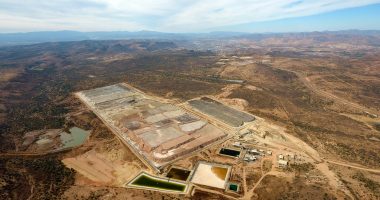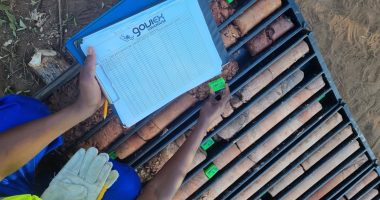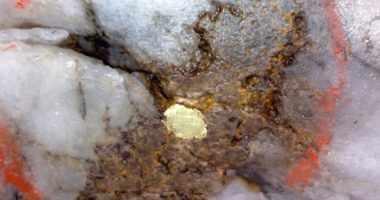With much of Europe gripped in an oil and gas supply crisis, i3 Energy remains focused on the acquisition, development, and production of long-life, low-decline, high-return assets. The company is anchored in Canada and the United Kingdom, with assets in Western Canada’s sedimentary basin as well as the UK’s North Sea.
The company’s CEO Majid Shafiq sat down with The Market Herald’s Simon Druker to talk about its asset valuations, a successful 2022 and what lies ahead.
TMH: To start with, give us an overview of the company and explain to us where your focus and exploration strategy lies. You have assets in two very different parts of the world.
MS: So, as you mentioned, we’re an oil and gas corporation. We are duel listed on the main board of the Toronto Stock Exchange and the AIM market in London. We originally listed in London in 2017 with a development asset in the North Sea and we still have a small development asset in the North Sea but in 2020 and 2021 we decided to enter the Canadian market because of the really good opportunities that we saw in oil and gas at really good valuations and so we entered the market in 2020 and through a series of acquisitions over the course of 2020 and 2021 and we raised the capital for those acquisitions in the London market offering a total shareholder return model. For example, share price growth through production growth and cash return by material dividend. Our market cap at the moment is around about $400 million Canadian and our assets are in Central Alberta, the Wapiti area, Clearwater and Simonette and it’s largely operated.
As I mentioned, we’ve got one small oil development asset in the UK North Sea, but the focus very much is in Canada. Our Canadian asset base in aggregate, we acquired around about 17,000 barrels of oil equivalent per day over the course of 2021 via three main transactions and as I mentioned, the acquisitions were funded with equity raised in the London market total of around about 80 million US dollars was raised. So that was 2020 when we entered, we exited 2022 with 24,000 barrels a day. Production is around about 50% gas, 25% oil and 25% condensate in NGLs. The asset base is very diverse. It’s mostly operated. We have ownership of lots of producing wells and infrastructure, including processing facilities, well batteries, pipelines and we’ve also got over 900 drilling locations to provide growth. So we’re really pleased with what we’ve managed to achieve over the course of the last two to three years in Canada and we see a ton of future growth in the asset base that we have here.
TMH: You had a very successful year from a financial standpoint last year, take us through some of those highlights and how they position you for the rest of 2023.
MS: As I mentioned, we originally acquired 17,000 barrels a day. By the beginning of 2022, we’d got that to 18,000 barrels a day through some pretty low cost workover activity. The assets that we acquired hadn’t been worked on for a long time, so there was lots of low-hanging fruit but over the course of 2021, as you know commodity prices has strengthened both oil and gas and we knew that when that happened it would make more sense, we’d get a better return if we used that capital to drill rather than buy in an asset market that would obviously start to inflate in terms of prices. So that’s what we did in late 2021. We changed our strategy from M&A to drilling and announced a capital budget of originally $47 million in December and we stated that we would potentially grow that if commodity prices continued to strengthen and based on the results of that initial drilling program.
So, we did in fact grow that capital program by another $50 million. So a total of around about a $100 million. So, and most of our wells, as I mentioned because the commodity prices had strengthened and the quality of that portfolio, most of them were forecast to deliver paybacks of less than a year. So we spent in total $95 million Canadian dollars there thereabouts and drilled 31 gross wells in 2022 by 19 net across our portfolio. It was a very successful campaign. Firstly, the drilling was 4% below budget, which was a huge achievement bearing in mind where inflation stood last year, both for oil field services and materials and very importantly, all the wells came in more or less at or above type curve.
So, it beat our expectations. We also drilled wells in some of our key growth areas in Simonette and Clearwater acreage and so as I mentioned we entered the year at 18,000 barrels a day and we reached 24,000 barrels a day in December largely through the success of that drilling program. We also paid $25 million Canadian in dividends last year, which was a significant increase on the prior year and the drilling program resulted in significant reserves growth. So our 2P reserves grew by around about 18% to over 118 million barrels. Our reserves replacement on that 2P basis was almost 480%. Our reserves life index is now almost 23 years on a 2P basis and evaluations that we achieved for our portfolio from our reserves auditor GLJ, they valued our PDP reserves at over $500 million Canadian or 58 cents a share.
Our 2P was around about $1.2 billion Canadian dollars or over $1.30 per share. So really successful program, really strong recycle ratios, almost three times in 2022 and in fact if you look at our spending in terms of acquisitions and drilling over the course of 2020-2022, essentially since we entered Canada, our recycle ratio has been over six times. So very successful 2022 and we’ve now got 380 gross book drilling locations in our reserves and over 940 if you count the un-booked locations. So hugely successful and does set us up for future growth in 2023 and beyond.
TMH: You are forecasting a year-over-year increase of oil production of between 10% and 13% this year, what’s behind that expectation and where do you go from there?
MS: In December we announced our capital program for 2023 and that was Canadian $85 million. So slightly below what we spent last year and that’s principally because commodity prices have fallen over the last several months but we’re planning a very similar drilling program. So we’re going to be drilling about 23 gross wells, 15 net across our portfolio and there’ll be a similar allocation across Central Alberta, Wapiti, Simonette and the Clearwater. The wells are very similar in type and location as the 2022 program and as I mentioned that was very successful in terms of the outcome and that has de-risked to a large degree the drilling program for this year and so we’re very confident in the expected outcome of our 2023 drilling program and that is expected to deliver peak production of around about 26,000 barrels of oil equivalent per day in Q3-Q4 of this year.
That will result in that average of 22,250 to 23,000 boe per day and that represents the 10% to 13% increase over 2022. Based on the budget price deck as of December when we announced that budget, that should deliver an EBITDA between $194 and $203 million Canadian dollars and the confidence that we have in our portfolio and the projections that we’re making led us to announce that we’d be increasing our dividend forecast by 20% over the monthly dividend that we paid in 2022. So we expect to pay around about $39 million Canadian dollars in dividends during 2023 and getting back to our total shareholder return that’s delivering well over 10% growth in production and at current share price, that’s a yield of 10%.
TMH: What are you excited about or looking to accomplish this year?
MS: I’ve mentioned a few times the growth potential in the asset in some key areas, which are the Simonette and the Clearwater. We’ve also got lots of potential growth in the Wapiti and Central Alberta but Simonette and Clearwater are massively under booked in terms of our reserves bookings. The Simonette itself, if it was fully developed north and south, Simonette could deliver 30,000 barrels a day, which is obviously a multiple of what we’re producing at the moment and the Clearwater which is universally regarded as the best onshore acreage in Canada and the U.S. We’ve been growing that position largely through land sale options. We also did a very significant farm-in in the Clearwater. We now have almost 109 sections in the Clearwater, so a significant position. All of this is also largely operators so we are in control of our own destiny in how we develop it.
These areas have got potential for significant growth, not just in reserve bookings but in in production obviously and so there some key catalysts for growth and we hope that the drilling that we’ve done, the drilling that we’re going to do this year and other subsurface studies will help us develop a plan to commercialize and move these assets forward. So that’s really important for 2023 and the more we study our portfolio, which as I mentioned earlier was very unloved by the incumbents and for various reasons, partly because they were under capitalized, or they weren’t focused on it. There are lots of potential that we’re now beginning to see. The more that that we study the subsurface, we are beginning to recognize overlooked or undeveloped reservoir intervals and we’re also very excited about some of these perspective areas that we haven’t spoken about before and excited about the potential that they give us for additional value creation.
TMH: Is there anything else we haven’t mentioned at this point that’s important for our viewers and your investors to know at this point?
MS: A really important thing is our shareholder base. So we are very keen to grow our Canadian shareholder base. Over 90% of our shareholders are based in the UK for historical reasons all the institutional shareholders are based in the UK because that’s where we’ve done all our equity capital raising and having a UK listing gives us a massive competitive advantage relative to our Canadian peers because we have access to a really large capital market obviously and that capital market has remained active for energy and that’s including oil and gas over the cycle and has provided a competitive advantage to us relative to where the market has been in Canada but we’d like to grow our Canadian shareholding base because our Canadian shareholders obviously understand our business better than our UK shareholders because they understand the Canadian exploration and production space better.
So our Canadian shareholding has grown from around about two-and-a-half percent and that came from the first transaction we did, which was a corporate acquisition of Tuscan Energy Income Corporation, which was done with i3 shares. So that gave us the original two and a half percent on the TSX. That has grown now to almost 10% and we expect that to continue to grow and hope it will continue to grow and hope it will reduce some of the value discount that we believe exists in our shares relative to our Canadian peers as we build a more knowledgeable local shareholder base who better know and understand exploration and production space in Canada. So that’s something that is happening, and we look forward to increasing that proportion that we have in Canada.
Majid Shafiq is the CEO of i3 Energy. The company trades on the Toronto Stock Exchange under the ticker symbol ITE. You can also visit i3.energy for more information.
This is sponsored content issued on behalf of i3 Energy, please see full disclaimer here.



